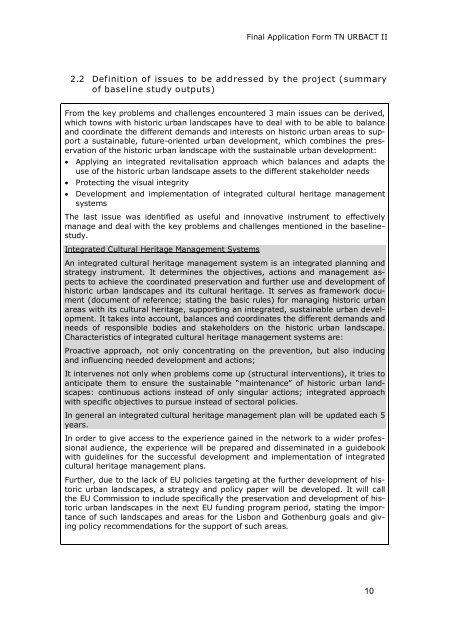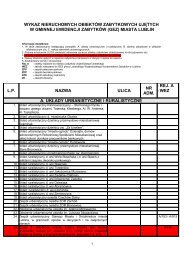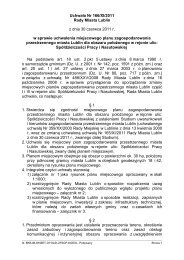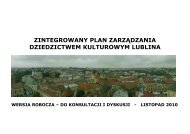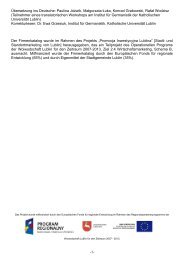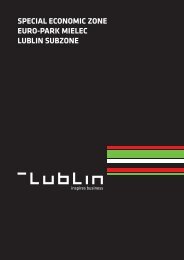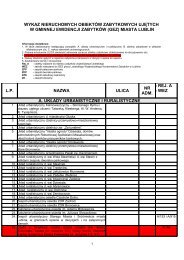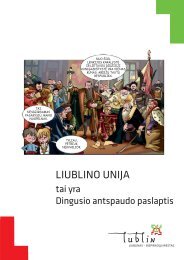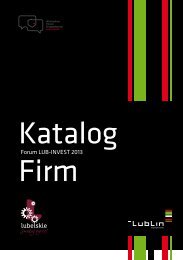The URBACT II Programme 2007 - 2013 - Lublin
The URBACT II Programme 2007 - 2013 - Lublin
The URBACT II Programme 2007 - 2013 - Lublin
You also want an ePaper? Increase the reach of your titles
YUMPU automatically turns print PDFs into web optimized ePapers that Google loves.
Final Application Form TN <strong>URBACT</strong> <strong>II</strong><br />
2.2 Definition of issues to be addressed by the project (summary<br />
of baseline study outputs)<br />
From the key problems and challenges encountered 3 main issues can be derived,<br />
which towns with historic urban landscapes have to deal with to be able to balance<br />
and coordinate the different demands and interests on historic urban areas to support<br />
a sustainable, future-oriented urban development, which combines the preservation<br />
of the historic urban landscape with the sustainable urban development:<br />
Applying an integrated revitalisation approach which balances and adapts the<br />
use of the historic urban landscape assets to the different stakeholder needs<br />
Protecting the visual integrity<br />
Development and implementation of integrated cultural heritage management<br />
systems<br />
<strong>The</strong> last issue was identified as useful and innovative instrument to effectively<br />
manage and deal with the key problems and challenges mentioned in the baselinestudy.<br />
Integrated Cultural Heritage Management Systems<br />
An integrated cultural heritage management system is an integrated planning and<br />
strategy instrument. It determines the objectives, actions and management aspects<br />
to achieve the coordinated preservation and further use and development of<br />
historic urban landscapes and its cultural heritage. It serves as framework document<br />
(document of reference; stating the basic rules) for managing historic urban<br />
areas with its cultural heritage, supporting an integrated, sustainable urban development.<br />
It takes into account, balances and coordinates the different demands and<br />
needs of responsible bodies and stakeholders on the historic urban landscape.<br />
Characteristics of integrated cultural heritage management systems are:<br />
Proactive approach, not only concentrating on the prevention, but also inducing<br />
and influencing needed development and actions;<br />
It intervenes not only when problems come up (structural interventions), it tries to<br />
anticipate them to ensure the sustainable “maintenance” of historic urban landscapes:<br />
continuous actions instead of only singular actions; integrated approach<br />
with specific objectives to pursue instead of sectoral policies.<br />
In general an integrated cultural heritage management plan will be updated each 5<br />
years.<br />
In order to give access to the experience gained in the network to a wider professional<br />
audience, the experience will be prepared and disseminated in a guidebook<br />
with guidelines for the successful development and implementation of integrated<br />
cultural heritage management plans.<br />
Further, due to the lack of EU policies targeting at the further development of historic<br />
urban landscapes, a strategy and policy paper will be developed. It will call<br />
the EU Commission to include specifically the preservation and development of historic<br />
urban landscapes in the next EU funding program period, stating the importance<br />
of such landscapes and areas for the Lisbon and Gothenburg goals and giving<br />
policy recommendations for the support of such areas.<br />
10


